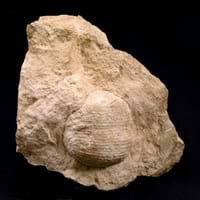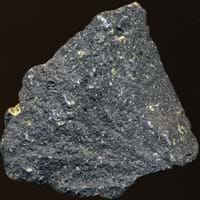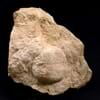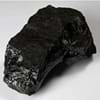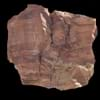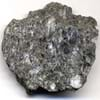Definition
Limestone is a sedimentary rock composed mostly of calcite and aragonite, which are different crystal forms of calcium carbonate
Basalt is a common extrusive igneous rock formed by the rapid cooling of basaltic lava exposed at or very near the surface of Earth
Discoverer
Belsazar Hacquet
Georgius Agricola
Etymology
From lime and stone in late 14th Century
From Late Latin Basaltes (variant of basanites ), very hard stone, which was imported from Ancient Greek Basanites
Class
Sedimentary Rocks
Igneous Rocks
Sub-Class
Durable Rock, Medium Hardness Rock
Durable Rock, Medium Hardness Rock
Group
Not Applicable
Volcanic
Other Categories
Fine Grained Rock, Opaque Rock
Fine Grained Rock, Opaque Rock
Texture
Clastic or Non-Clastic
Glassy, Massive, Porphyritic, Scoriaceous, Vesicular
Color
Beige, Black, Blue, Brown, Cream, Gold, Green, Grey, Light Green, Light Grey, Linen, Pink, Red, Rust, Silver, White, Yellow
Black, Brown, Light to Dark Grey
Durability
Durable
Durable
Scratch Resistant
Yes
Yes
Appearance
Rough and Banded
Dull and Soft
Interior Uses
Decorative Aggregates, Interior Decoration
Floor Tiles, Homes, Hotels, Kitchens
Exterior Uses
As Building Stone, As Facing Stone, Garden Decoration, Office Buildings
As Building Stone, Paving Stone, Garden Decoration, Office Buildings
Other Architectural Uses
Curbing
Curbing, Whetstones
Construction Industry
Cement Manufacture, Cobblestones, for Road Aggregate, Production of Glass and Ceramics, Raw material for the manufacture of mortar, Roadstone, Source of calcium
Arrowheads, As Dimension Stone, Cobblestones, Cutting Tool, Rail Track Ballast, Roadstone
Medical Industry
In Chemical and Pharmaceutical Industry, Medicines and Cosmetics
Not Yet Used
Antiquity Uses
Artifacts, Monuments, Sculpture, Small Figurines
Artifacts, Monuments
Commercial Uses
Animal feed filler, As a Feed Additive for Livestock, Paper Industry, Raw material for manufacture of quicklime, slaked lime, Soil Conditioner, Used in aquariums, Whiting material in toothpaste, paint and paper
An Oil and Gas Reservoir, Commemorative Tablets, Creating Artwork, Used in aquariums
Types
Chalk, Coquina, Fossiliferous Limestone, Lithographic Limestone, Oolitic Limestone, Travertine, Tufa
Alkaline Basalt, Boninite, High Alumina Basalt, Mid Ocean Ridge Basalt (MORB), Tholeiitic Basalt, Basaltic trachyandesite, Mugearite and Shoshonite
Features
Host Rock for Lead, Stalactites and stalagmites are formed from this rock, Zinc and Copper Deposits
Has High structural resistance against erosion and climate, Very fine grained rock
Archaeological Significance
Famous Monuments
Acropolis of Athens in Greece, Agia Sophia in Istanbul, Turkey, Al Aqsa Mosque in Jerusalem, Angkor Wat in Cambodia, Big Ben in London, Charminar in Hyderabad, India, Chhatrapati Shivaji Terminus in Maharashtra, India, Chichen Itza in Mexico, Empire State Building in New York, Khajuraho Temples, India, Kremlin in Moscow, Louvre in Paris, France, Neuschwanstein in Bavaria, Potala Palace in Lahasa, Tibet, Wailing Wall in Jerusalem
Easter Island in the Polynesian Triangle, Pacific Ocean, Gateway of India in Mumbai, India, Gol Gumbaz in Karnataka, India
Famous Sculptures
Ajanta Caves in Maharashtra, India, Elephanta Caves in Maharashtra, India
Data Not Available
Formation
Limestone is a sedimentary rock which is mainly made up of calcium carbonate.
Basalt forms when lava reaches the Earth's surface near an active volcano. The temperature of lava is between 1100 to 1250° C when it gets to the surface.
Mineral Content
Calcite, Chert, Clay, Dolomite, Quartz, Sand, Silt
Olivine, Plagioclase, Pyroxene
Compound Content
Aluminium Oxide, NaCl, CaO, Iron(III) Oxide, FeO, MgO
Aluminium Oxide, CaO, Iron(III) Oxide, FeO, Potassium Oxide, MgO, MnO, Sodium Oxide, Phosphorus Pentoxide, Silicon Dioxide, Titanium Dioxide
Types of Metamorphism
Not Applicable
Contact Metamorphism
Types of Weathering
Biological Weathering, Chemical Weathering, Mechanical Weathering
Biological Weathering
Types of Erosion
Chemical Erosion, Coastal Erosion
Not Available
Grain Size
Fine Grained
Fine Grained
Fracture
Splintery
Conchoidal
Streak
White
White to Grey
Porosity
Less Porous
Less Porous
Luster
Dull to Pearly
Not Available
Cleavage
Non-Existent
Not Available
Specific Gravity
2.3-2.7
2.8-3
Transparency
Opaque
Opaque
Density
2.3-2.7 g/cm3
2.9-3.1 g/cm3
Resistance
Pressure Resistant
Heat Resistant, Pressure Resistant, Wear Resistant
Deposits in Eastern Continents
Asia
Brunei, India, Indonesia, Malaysia, Singapore, Thailand, Vietnam
India, Russia
Africa
Cameroon, Chad, Ghana, Kenya, Malawi, Sudan, Tanzania, Togo, Zambia, Zimbabwe
South Africa
Europe
United Kingdom
Iceland
Others
Not Yet Found
Not Yet Found
Deposits in Western Continents
North America
USA
Canada, USA
South America
Colombia
Brazil
Deposits in Oceania Continent
Australia
Adelaide, New Zealand, Queensland, Tonga, Victoria, Yorke Peninsula
Not Yet Found
All about Limestone and Basalt Properties
Know all about Limestone and Basalt properties here. All properties of rocks are important as they define the type of rock and its application. Limestone belongs to Sedimentary Rocks while Basalt belongs to Igneous Rocks.Texture of Limestone is Clastic or Non-Clastic whereas that of Basalt is Glassy, Massive, Porphyritic, Scoriaceous, Vesicular. Limestone appears Rough and Banded and Basalt appears Dull and Soft. The luster of Limestone is dull to pearly while that of Basalt is not available. Limestone is available in beige, black, blue, brown, cream, gold, green, grey, light green, light grey, linen, pink, red, rust, silver, white, yellow colors whereas Basalt is available in black, brown, light to dark grey colors. The commercial uses of Limestone are animal feed filler, as a feed additive for livestock, paper industry, raw material for manufacture of quicklime, slaked lime, soil conditioner, used in aquariums, whiting material in toothpaste, paint and paper and that of Basalt are an oil and gas reservoir, commemorative tablets, creating artwork, used in aquariums.
